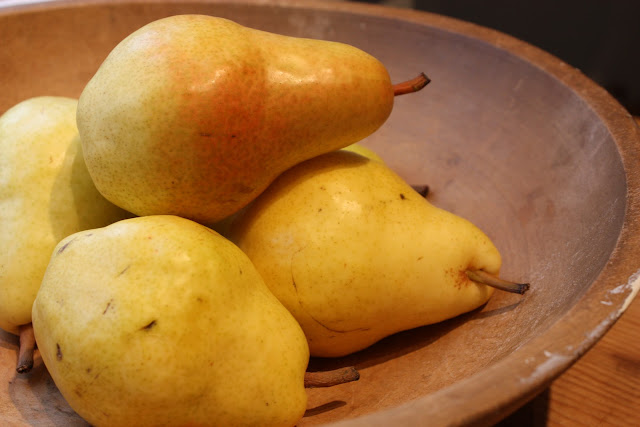"What the hell is that?" A common utterance from guests who open my fridge looking for a place to put their beer. This time, referring to the green baseball sized fruits floating in a pungent red brine. "Is that string?"
I sweetly reply, "Mangoes. Its a type of pickle."
Mangoeing actually refers to a 19th century method for pickling unripe melons, green tomatoes, peppers, or even unripe peaches. It has nothing to do with the tropical mangoes you can find in the store. The fruit is hollowed out and put into a salt brine overnight. Then, its stuffed with a mixture of chopped veggie, sewn shut with a needle and thread, then pickled in a strong vinegar. I first ran across a reference to it in a cookbook published in 1877 called
Buckeye Cookery and Practical House Keeping. Written before canning was widely used, this book is full of ways to preserve your harvest. None of the recipes have any water in the preserving brine. Just straight vinegar. So strong it could cure an embarrassing rash. More potent than political rhetoric. This is my version of the recipe, streamlined and updated.
If you live somewhere like Minnesota, as I do, its not uncommon to have melons on the vine that will never ripen before the frost. This is a good way to use them up. I used a variety of melon that is specifically grown for mangoeing called a mango melon. Its a tasteless heirloom melon, so I didn't feel like I was wasting anything by using them.
The first day, you will need:
1-2gallons of unripe melons or green peppers 1 gallon water
1 cup salt needle and white thread
a pairing knife and a small spoon a large jar or bowl to submerge the fruits in
Wash the fruits and look them over for scars and soft spots. The general rule in pickling is that the pickling subject needs to be perfect.
Select a fruit. Cut a wedge out of the side of the fruit. Make sure its a wedge and isn't halved. This will keep them in place later. If you are using peppers, you can cut off the top.
Hollow out the fruit forming a little box. Hollow out the inside and the top.
Thread the needle. Push the needle through the lid and through the fruit. Cut the tread and tie the ends together. The purpose here is to tie the two pieces together so they don't float away from each other in the brine. Repeat with the remaining fruits.
Make a salt brine: The 19th century definition of salt brine is salty enough water to float an egg. That's a lot of salt. I mixed 1 cup of salt to 1 gallon of water. It worked fine. Submerge the fruits in the brine. You could use a plate to keep them under the brine. Let sit overnight or up to 2 days.
The Filling
You will need:
1/2 a small head of red cabbage, sliced thin 1 red onion, sliced thin
1 cucumber, seeded, halved and sliced thin 1 cup red grapes, halved
1/4 cup kosher salt 1 T mustard seed
Cotton kitchen string 4 cups cidar vinegar
4 cups water 3 T sugar
1 inch knob of ginger, peeled and sliced 3-5 chilies pierced with a sharp knife.
To make the filling, combine cabbage, onion, cucumber and the salt in a non-reactive bowl. Let stand 1 hour. Rinse and drain the mixture twice. Add mustard seed and grapes. Mix well and set aside.
Drain the fruit from the salt brine. Rinse well and drain again. Take one fruit and remove the thread connecting the pieces. Stuff the fruit with the cabbage mixture. Use enough to fill it tightly but do not over fill.
Put on the lid. Wrap a piece of kitchen string around the melon twice and tie tightly. Repeat with the remaining melons. Combine the vinegar, water, sugar, ginger and chilies in a deep non-reactive pot. Add fruits and bring to a boil. Simmer for 30 min. Stir gently as not to loose the string.
Remove from the stove and let cool. When they are cool enough to handle, pack the fruits in a jar or crock. Pour the cooking liquid over them, making sure they are covered. Refrigerate for up to 2 months.
As for how to serve them, well, the 19th century recipe doesn't explain that. I sliced them and put them on a relish dish. I pull one out and eat it as a snack once in a while. I also think they'd be great with as a container for a Bloody Mary Shooter. Get creative! You could stuff them with almost anything. (except cheese. Trust me.) I love to hear how you've adapted the recipe!
Couple of great references:
Baker Creek Heirlooms sells Mango Melon seeds: http://rareseeds.com/
Visit The Oliver Kelley Farm in late summer and maybe have a chance to see 19th century pickling and the mangoeing process done the traditional way. http://www.mnhs.org/places/sites/ohkf/


















































